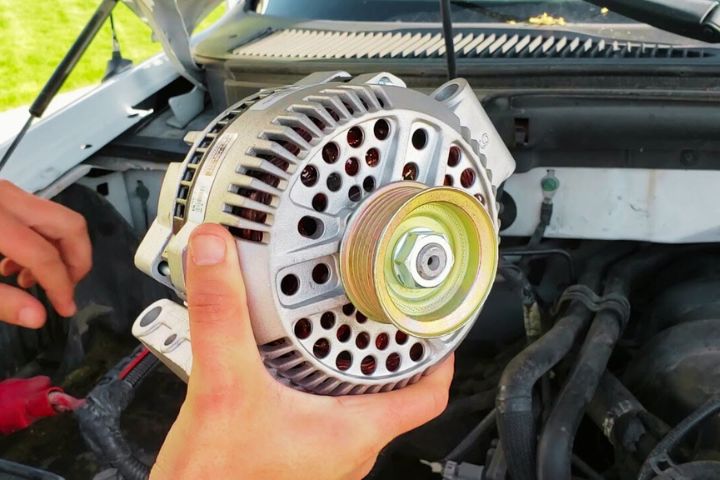Is Your Ford F150 Alternator Failing? Signs and Fixes

Your Ford F150 alternator does a lot of the heavy lifting when it comes to your creature comforts like air conditioning, stereo, and auxiliary lighting. If it breaks down, a replacement is the only way to keep your vehicle running safely. Luckily, it is a straightforward DIY project that you can learn in an afternoon.
F150’s Components and Operation
The alternator harnesses energy produced by the engine to power accessories and keep the battery charged, which basically allows your vehicle to depend on the battery for starting, not ongoing operations. Cars use so much energy that your battery would not last long otherwise, and you can see that if you ever have an alternator fail while you are on a trip.
The exact amperage of an alternator’s output depends on the vehicle’s current engine speed and the alternator’s capacity. There are a few different capacities available for F150s. Regardless of the amperage, the voltage output should be between 13.5 and 14.5 volts.
A Step-by-Step Guide to Replacing the Alternator
Replacing the alternator can take some time because there are a lot of parts to disconnect before you get the old one out. Once you remove the old part, installing the new Ford F150 alternator is a matter of reassembling everything in reverse order.
- Disconnect the negative battery clamp
- Remove the air intake pipe (Y pipe)
- Get the turbo intake pipe out
- Take off the auxiliary belt
- Remove the turbocharger bypass tube
- Disconnect the electrical connectors from the alternator itself
- Remove the mounting nuts from the alternator unit
At this point you should be able to take out the old alternator and situate the new one. Start with the mounting nuts and connectors, then carefully reset the auxiliary belt to the proper path and tension. From there, it’s a matter of reconnecting the pipes you needed to remove for access and then hooking your battery up again.
The most important thing for beginners to remember is that the battery needs to be the first thing disconnected and the last thing connected. This is always a good safety tip, but when you are dealing with electrical system components like the alternator or voltage regulator, it is absolutely essential. Never start disassembling your engine without disconnecting the battery.
Do You Need a High-Performance Alternator?
If your alternator and battery show normal voltage output but you have been experiencing issues with dimming headlights or other electrical system shortcomings, it could be because you are asking for more energy than your alternator can handle sometimes. This happens most often when a vehicle has accessories like premium stereo upgrades that eat a lot more power than the manufacturer anticipated. When that happens, aftermarket alternators can help you get the energy you need to power anything from high-end stereo equipment to camping creature comforts like a mini fridge.
Find the Alternator You Need
If the symptoms here sound familiar but you do not drive an F150, you still probably need an alternator. While the location and access to the part will be different, you can easily find an alternator for Mini Cooper models and other small cars at most of the same retailers you’d find a new F150 alternator. Get your VIN information ready and then try out a search for the new part you need.
Also Read : Factors To Look For Other Than Solar Inverter With Battery Price


